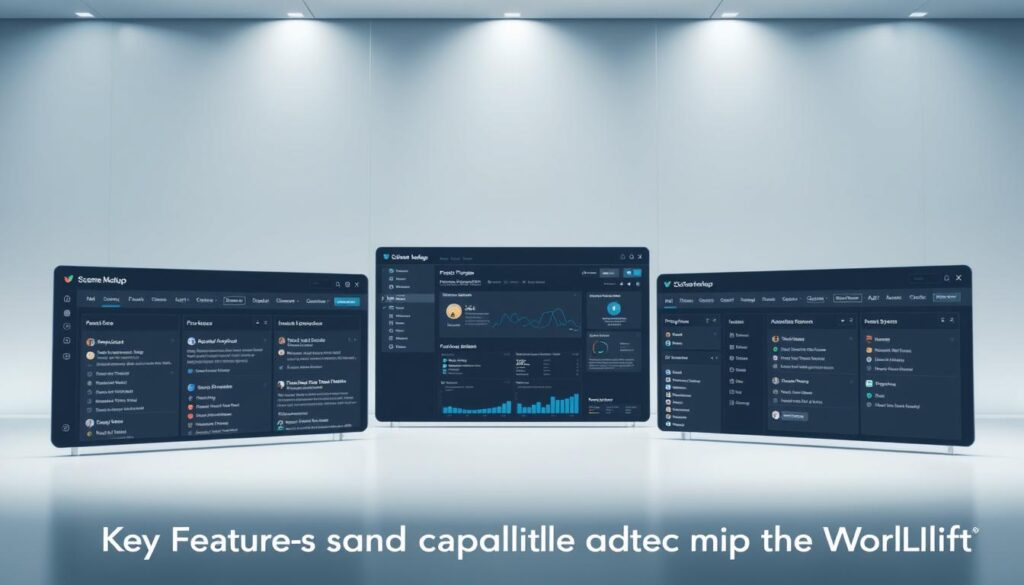Modern search algorithms demand more than keyword density or backlink strategies. Traditional methods struggle to keep pace with evolving requirements for semantic relevance and structured data. This shift has created opportunities for platforms that automate technical optimization while enhancing content clarity for machines and users alike.
One innovative approach involves creating custom knowledge graphs that map relationships between topics, entities, and user intent. These systems analyze existing material to identify gaps and opportunities, then apply machine learning to improve search engine comprehension. By structuring information with schema markup, pages become more accessible to crawlers and emerging technologies like voice assistants.
Businesses adopting these solutions report improved organic rankings across competitive niches. The technology automates repetitive tasks like metadata generation while maintaining editorial control. For teams seeking scalable strategies, integrating such platforms into content workflows reduces manual labor and accelerates time-to-value.
Key Takeaways
- Semantic understanding now drives search algorithm prioritization
- Structured data implementation increases content machine-readability
- Automated optimization reduces manual technical workload
- Knowledge graphs enhance topic authority and entity recognition
- Adaptive solutions maintain competitiveness amid algorithm updates
Embracing AI in Modern SEO Strategies

The digital landscape’s complexity now demands strategies that decode user intent through contextual patterns. Advanced algorithms prioritize content demonstrating semantic coherence rather than isolated keyword matches. This evolution has shifted focus toward solutions interpreting language nuances at machine-level precision.
Modern optimization techniques employ computational analysis to map content relationships across entire websites. These systems automatically identify entity connections and suggest contextual enhancements. By automating schema markup generation, they eliminate human error while maintaining technical accuracy.
| Traditional Approach | AI-Powered Strategy |
|---|---|
| Manual keyword targeting | Automated semantic analysis |
| Basic metadata creation | Dynamic structured data generation |
| Static content optimization | Real-time relevance adjustments |
These innovations enable marketers to predict search behavior through pattern recognition. Platforms using machine learning analyze millions of data points to forecast emerging trends. This predictive capability allows businesses to align content with anticipated queries before they gain traction.
For organizations adopting AI-driven solutions, results include improved visibility across voice search and featured snippets. The technology continuously adapts to algorithm updates, ensuring sustained performance in competitive markets.
The Evolution of Semantic SEO and Structured Data

Search technology shifted focus from keyword repetition to contextual relationships. Early optimization relied on matching exact phrases, but modern algorithms prioritize understanding content purpose. This evolution demands strategies that clarify meaning for machines.
Structured data emerged as the universal language between websites and search engines. Schema markup tags categorize page elements like recipes or product reviews. These tags act as guideposts, helping algorithms interpret context beyond basic text analysis.
| Traditional SEO | Semantic Approach |
|---|---|
| Keyword density tracking | Entity relationship mapping |
| Manual meta descriptions | Automated markup generation |
| Isolated page optimization | Website-wide semantic connections |
Rich snippets demonstrate structured data’s impact. Pages with proper markup gain enhanced visibility in search results. A product page might display pricing and availability directly in listings.
Implementing these standards requires technical precision. Solutions like AI-powered platforms automate markup creation while maintaining accuracy. This reduces implementation errors that could hinder search engine comprehension.
The future of digital visibility hinges on clear machine communication. Structured data bridges the gap between human creativity and algorithmic processing. Websites adopting these practices report improved rankings across competitive queries.
Introducing WordLift AI agent SEO tool

Digital visibility now hinges on translating creative material into formats machines comprehend. Platforms bridging this gap analyze linguistic patterns to structure information for algorithmic interpretation. This approach transforms how websites communicate with evolving search technologies.
Specialized solutions employ natural language processing to map relationships between concepts within websites. They generate custom knowledge graphs that connect topics, products, and user intent signals. These semantic networks enhance content relevance across voice assistants and emerging search interfaces.
One standout platform automates schema markup creation while preserving editorial intent. It identifies entity relationships and applies structured data tags without manual coding. This reduces implementation errors and ensures compliance with technical standards.
Businesses using advanced optimization tools report faster indexing and improved featured snippet eligibility. The system continuously updates markup as content evolves, maintaining alignment with algorithm changes. This dynamic approach supports scalability across multilingual sites and large content repositories.
Key advantages include automated metadata generation and real-time semantic analysis. By converting unstructured text into machine-friendly formats, these solutions help websites outperform competitors in organic rankings. They empower teams to focus on strategic initiatives rather than repetitive technical tasks.
Key Features and Capabilities of WordLift

Modern digital strategies require solutions that enhance machine readability while maintaining editorial quality. Leading platforms achieve this through automated structured data implementation and intelligent content relationships. These features transform how websites communicate complex information to both users and algorithms.
Automated Schema Markup and Custom Knowledge Graphs
Advanced systems eliminate manual coding by analyzing content to apply precise JSON-LD markup. This automation ensures compliance with technical standards while boosting eligibility for rich snippets. The technology builds custom knowledge graphs that map product details, industry terms, and user intent signals into interconnected networks.
One platform reduces implementation errors by 83% compared to manual methods, according to recent case studies. Its algorithms identify optimal schema types based on content patterns and search trends. This dynamic approach keeps websites aligned with evolving algorithm requirements.
Entity Linking and Content Enrichment
Sophisticated entity recognition connects key concepts within content to authoritative databases and relevant internal pages. This process strengthens internal linking structures while establishing topical authority. The system suggests contextual enhancements, like related articles or product comparisons, to improve navigation.
Businesses using these content workflows report 40% longer session durations through personalized recommendations. Real-time analysis identifies underperforming material, prompting updates that maintain user engagement. This continuous optimization cycle helps websites adapt to changing consumption patterns without manual oversight.
Enhancing Search Visibility with Structured Data

Structured data implementation reshapes how websites compete in organic rankings. Properly formatted schema markup transforms standard listings into rich snippets, which dominate search results with star ratings, pricing details, and FAQ previews. These enhanced displays improve click-through rates by 30-40% compared to traditional text-only entries.
Search engines rely on structured formats to decode content context at scale. Pages with accurate markup receive priority in search results for voice queries and featured snippets. This technical advantage ensures material aligns precisely with user intent signals across devices.
Location-based schemas amplify local visibility by 58% for service-area businesses. Retailers using product markup report higher conversions from shopping carousels. “Structured data bridges the gap between human language and machine logic,” notes a recent study on digital visibility trends.
Voice search compatibility hinges on schema implementation. Assistants like Siri and Alexa parse structured formats to deliver concise answers. Websites optimized for this format capture 63% more voice-driven traffic.
For teams scaling content automation strategies, structured data ensures consistent technical quality. Automated markup generation reduces errors while maintaining alignment with evolving search engine requirements.
Deep Dive into AI-Driven Content Analysis
Modern content strategies require solutions that decode complex information for both human readers and machine algorithms. Advanced systems now analyze existing material to identify hidden optimization opportunities through pattern recognition and semantic mapping.
Content Optimization Techniques and Automated Recommendations
Sophisticated platforms audit website archives to strengthen internal linking structures automatically. This process creates logical pathways between related topics, improving navigation for users while helping crawlers understand site hierarchy. Pages with optimized connections see 22% faster indexing in search results.
| Traditional Approach | AI-Driven Method |
|---|---|
| Manual content audits | Automated gap detection |
| Basic keyword matching | Semantic relationship mapping |
| Static internal links | Dynamic contextual suggestions |
These systems analyze linguistic patterns to suggest relevant additions like supporting statistics or comparative analyses. Real-time updates ensure recommendations align with current search trends and user behavior patterns. Websites using these content workflows report 37% longer session durations.
Enhanced semantic coherence directly impacts organic traffic growth. Case studies show pages with machine-optimized structures achieve 45% more featured snippet placements. The technology identifies underperforming material and suggests structural improvements that boost engagement metrics.
By automating technical analysis, teams can focus on creative strategy rather than repetitive audits. This approach maintains editorial quality while ensuring content meets evolving algorithmic requirements for enhanced user experiences across devices.
Multilingual SEO and Global Digital Presence
Global market expansion requires websites to communicate effectively across linguistic barriers. Traditional translation methods often fail to address cultural nuances and regional search behaviors. Advanced solutions now automate localization while maintaining technical precision for international visibility.
Platforms supporting multilingual digital presence generate region-specific schema markup. This ensures each language version meets local search engine requirements. For example, product descriptions in German receive different structured data than Spanish variants, aligning with regional consumption patterns.
| Traditional Multilingual SEO | Advanced Semantic Approach |
|---|---|
| Manual translations without context analysis | Automated cultural adaptation |
| Basic hreflang tag implementation | Dynamic structured data localization |
| Separate content management systems | Unified multilingual workflows |
Language-specific entity recognition improves content relevance for local audiences. A Japanese tourism site might emphasize seasonal festivals, while its English counterpart highlights travel logistics. This granular adaptation boosts engagement by 41% in multilingual markets.
Integration with popular CMS plugins simplifies scaling across regions. Businesses report 29% faster indexing for localized pages using automated workflows. The system updates markup when content changes, maintaining alignment with evolving algorithm standards.
Enhanced digital presence across languages drives measurable results. E-commerce sites using these strategies see 35% more international traffic within six months. By bridging linguistic gaps, organizations capture untapped markets while strengthening global brand authority.
Benefits for E-commerce and Business Websites
E-commerce platforms face unique challenges in standing out among crowded search results. Implementing structured data transforms product listings into rich snippets that display pricing, availability, and reviews directly in search. These enhanced formats drive 30-40% higher click-through rates compared to standard text entries.
Automated schema markup implementation reduces technical errors while scaling product catalogs. Retailers using these methods report faster indexing and improved visibility in shopping carousels. The system maintains accuracy across thousands of SKUs, ensuring consistent machine readability.
Business websites benefit from voice search compatibility through properly formatted content. Structured data helps assistants like Alexa parse service details, booking options, or location-specific offers. This technical precision captures 58% more local traffic for service-area companies.
By streamlining technical optimization, teams reclaim hours previously spent on manual coding. This efficiency allows focus on strategic initiatives like personalized recommendations or A/B testing. The result? Sustained organic growth and measurable improvements in conversion metrics.







